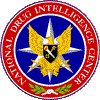
|
National
Drug Intelligence Center New England High Intensity Drug Trafficking Area Drug Market Analysis June 2007 AbuseAvailable treatment data depict the overall drug abuse situation in the New England HIDTA region. From 2003 through 2005 the number of admissions for heroin to publicly funded treatment facilities in the region outnumbered those for all other illicit substances, including cocaine, marijuana, other opiates--which include prescription narcotics--and amphetamines/other stimulants. Fueling the heroin abuse problem are increasing levels of prescription narcotics abuse. The number of admissions to substance abuse treatment facilities in the region for other opiates, including prescription narcotics, increased substantially from 2003 through 2005. (See Table 1.) According to area treatment providers, abusers--particularly adolescents and young adults who become addicted to prescription narcotics--often switch to heroin, attracted by the drug's lower cost and higher purity. One 80-milligram tablet of OxyContin costs $80 in Boston, while a bag (typically containing between one-seventh and one-tenth of a gram of the drug) of SA heroin costs $6 to $20. The high number of opiate abusers who switch to heroin has led the Drug Enforcement Administration (DEA) to report that OxyContin, the primary prescription narcotic of abuse, is a gateway drug to heroin use in New England.
Many heroin abusers in the New Hampshire area are "functional heroin abusers"; they hold jobs, have families, and participate in community events. Moreover, heroin abusers from New Hampshire, known as "day-trippers," drive to the Lawrence/Lowell area several times a day and ingest or inject heroin while driving back to New Hampshire rather than transporting the drug back to New Hampshire for future use. As such, law enforcement officers rarely seize heroin from these abusers on interdiction stops. Methadone has emerged as the leading cause of drug-related deaths in Maine and New Hampshire. In 2006 more overdose deaths in these two states were attributed to methadone than to any other drug. Additionally, methadone was the primary cause of drug-related deaths in New Hampshire from 2002 through 2005. Public health officials in Maine and New Hampshire report that the leading cause of this development is the removal of OxyContin as a preferred drug from state health plans; the drug was removed because of its high abuse potential. With the removal of OxyContin as a preferred drug, physicians are increasingly prescribing methadone for pain relief. As a result, prescription narcotics abusers, who typically obtain the drugs through fraud, theft, or doctor-shopping, are increasingly acquiring methadone rather than OxyContin. These abusers, who are seeking an OxyContin-type high--which is physiologically unattainable from methadone--sometimes use excessive amounts of the drug and accidentally overdose. |